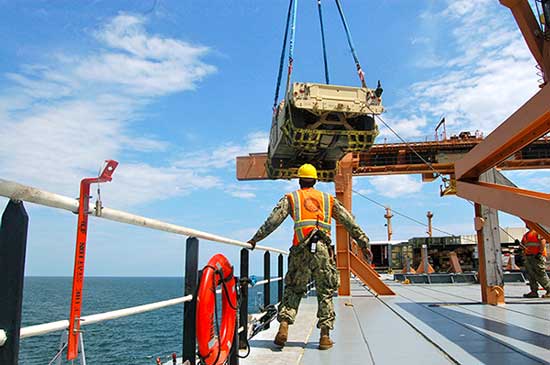21 Necessary EOT Crane Safety Tips for Crane Operators
EOT crane safety is important for crane operators, we summed up 21 necessary operation safety tips for EOT crane, hope the EOT crane operator can obey strictly.

Safety position
In the hoisting operation, it is very dangerous under the hanging object, the hoisting area, the guide pulley, the steel rope triangle area, the fast rope, the inclined hook or the direction of the guide pulley, etc. Once danger occurs, it is difficult to get out of the way. Thus the standing position of crane operator is important, not only the operator themselves should always pay attention to, but also they should remind each other, check carefully, in case of emergency.
Correctly recognize the safety factor of rigging
In hoisting operation, the personnel can not know the safety factor of the rigging correctly, often based on the frequency of use, resulting in overweight jobs are always in a dangerous state.
Foresee all kinds of situations encountered during demolition
For example, estimate the weight of the object, thoroughness of cutting, the load increased by extrusion of the dismantled piece, forcibly lift the object without checking the connection position.
Avoid mistake operation
Hoisting operation is different from many other constructions, involving large surface, often using different units, different types of cranes.Daily operating habits, performance, command signal differences and other factors are easy to cause misoperation, so be particularly cautious
The lifted object must be tied firmly
When dismantling and lifting in the high attitude, the objects should be locked instead of pocket. Wrap the sharp edges of lifted objects.
The winding rope is not tight
In the hoisting of large parts, the rope arranged on the drum of crane or motor hoist is loose, resulting in a heavy load of fast rope tights into the rope bundle, the fast rope shaking violently and is easy to lose stability, as a result, the crane often risks continuing dangerous operation and can’t be stopped.
Temporary hanging ring is not firm
- The strength of temporary hanging ring is not enough.Because the welding base metal surface rust, and the rust is not completely clear before welding, result that the appearance of the welding meat is beautiful, but the actual welding meat is not melted together with the base material, the fracture occurs when the load is increased or subjected to shock.
- The force direction of the hanging ring is single. When hanging or putting down a long cylindrical object, the force direction of the hanging ring is also changing with the angle change of the lifted object, this situation is not considered in the design and welding of the lifting ring, which causes the defective lifting ring to break suddenly during the lifting operation. In this case, the vertical plate is required to be welded on both sides of the lifting ring, and the size and thickness of the vertical plate should be designed by the technical personnel.
- The welding material of the lifting ring does not match the base material, or they are welded by unprofessional welders.
Improper selection of hoisting tools or lifting points
It is lack of theoretical calculation to set up hoisting tools or to use pipeline and structure as lifting point of cranes, bearing capacity estimated by experience is not enough, or partial bearing capacity is not enough, one instability causes the whole collapse.
Pulley and rope are selected unreasonably
When the hoisting tools are set up, there is not enough knowledge about the stress changes of the ropes caused by the angle change of the fast ropes, the tonnage of guide pulley is too small, the chosen ropes for pulley are too thin, after the overload, the rope wheel are broken.
Accidental hanging of rigging without loading
When the lifting work has been completed, the hook is running with empty rope rigging, then the hook accidentally lift a object that is already put down from the sling.If the crane operator or the conductor did not respond promptly, the accident will happens instantly. This kind of accident has very bad consequences for crane operators and crane lifting appliances.
The hoisting construction scheme is out of line with the actual operation
It mainly includes incomplete content, lack of necessary data, and the construction method is inconsistent with the actual operation, resulted that they did not play a guiding role in construction.
Object suspended for a long time isn’t added safety rope.
Due to installation process requirements, some equipment or components need to be suspended first and then fixed in place, some suspended objects stay longer in the air. If there is no safety rope, once the object is subjected to accidental vibration, shock or welding wire and other injuries, it will cause serious consequences of suspension falling.
Process handover unclear
If some structures or platforms are dismantled, the handover is not clear, the result is that the problem happened, but still don’t find the reason.
Busy in construction and the inspection is not enough
- There was no ground consultation for the crane position.
- Weight of the lifted object is not confirmed before crane operation.
- The hidden danger of high voltage line, operation equipment, coal oxygen pipeline leakage point in the surrounding environment.
- The safety warning sign is not obvious.
Use the problematic rigging
Some people choose ropes casually in order to save trouble, but they don't know that these ropes may be thrown by someone else, some suffered internal injuries, some of them have been beaten by electric welding, some have been annealed at some parts, these problems are not easy to be checked out. Some crane owners buy cheap slings, rings and other substandard slings produced by informal manufacturers, in order to save money, there are potential dangers to the workers when they operate the crane.
In order to ensure the safety of the construction, please don't use the rope thrown by others. Cut off the damaged ropes timely and prevent others from misusing them. Don't buy slings produced by informal manufacturers.
Use hemp cable as safety rope
Because the lifting capacity of hemp cable is far less than that of the steel wire rope, and in the daily use, it is easy to be damage and reduced the tensile force. Therefore, using hemp cable is not safe, on the contrary, it leads to psychological dependence and causes accidents.
There is no warning zone
In the dangerous area under the aerial work, there is no safety warning zone, or arrange safety officer, accident caused by unknown person entering dangerous area.
The "brake lever" is not considered when lifting object
When lifting a heavy object by a long arm of EOT crane, because the crane arm is forced to brake, the crane arm head and the vertical line of gravity center of heavy object are changed. If the lifting lever is not correct, it will cause the hanging object to be displaced instantaneously. If the operator is not thinking about the situation and does not take evasive measures (especially in the air), it may be an accident.
Inaccurate estimation of weight when two cranes flip one item simultaneously
Because the center of gravity is changing in the turning process, if the calculation is not accurate, it is easy to cause one of the cranes to overload and lose stability. If there is a problem, not only threat to people's safety, but also cause huge loss of mechanical economy, there is a profound lesson in history, which needs special attention from construction and technical personnel.
No necessary precautions during dangerous area operation
For example, work on overhead EOT crane beam, don’t confirm with crane operator clearly in advance, or the wrong operation due to the busy work of crane operator.Due to the failure of hanging warning flag, warning lamp and setting up the car gear, the crane suddenly appeared, construction personnel have no time to escape, resulting in accidents.
Inadequate consideration of climate impacts
In the open environment, the EOT crane which has not been installed has not been taken reliable sealing measures. During the crane operation, the hook is topped occasionally, but it is not be lifted to a safety position.
In summary, the lifting operation relates to the construction of organization, operation design, planning, equipment selection, operation skills, construction experience, mutual cooperation, work with a variety of factors, environmental characteristics, climatic factors and so on. Therefore, in order to guarantee the EOT crane safety, it is necessary to attach great importance to construction management, personnel operation and other aspects, operate the EOT crane according to scientific strictly.
As an EOT crane operator, besides strict implement the relevant provisions, but also need to study operating skills, sum up experiences in time and improve the ability to prevent accident. In operation of EOT crane, they should also pay attention to the different construction experience, operating skills and knowledge of each individual, resulting in the lifting operation of the risk and hidden danger of judgment is also different.



